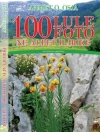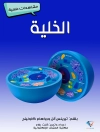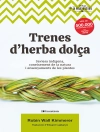This book is compilation of studies related with the xenobiotics i.e. chemical or other substance that is not normally found in the ecosystems and get accumulated at higher concentration in the biological system due to rampant industrialisation and urbanisation activities. This book has tried to give information on various issues to give comprehensive and concise knowledge of the recent advancement in the field of environmental xenobiotics and how it disturbs the plants metabolism. Other key features of the book are related to xenobiotic toxicity and detoxification mechanism, biochemical tools toward its remediation processes, molecular mechanism for xenobiotics detoxification and effect on metallomics. It also focuses on recent development in the field of waste water remediation concerned with the xenobiotics involvement. This book is different in such a way that it includes all the initial information along with the new researches. It includes the description of problem along with its solution. This volume describe the effects of xenobiotics at different levels i.e. biochemical, physiological and molecular, giving the details on signaling pathways to modify the responses of xenobiotics in plant system. Thus, it gives confirming crosstalk between xenobiotic effects and signalling pathways.
This book includes description about both the organic contaminants such as pesticides, solvents and petroleum products as well as inorganic xenobiotics that include heavy metals, non-metals, metalloids, and simple soluble salts. Here the plant is main objective and that have to deal with these kinds of compounds either by avoiding accumulation of these compounds or by exhibiting several enzymatic reactions for detoxification including oxidation, reduction, and conjugation reactions. Affected plants exhibit several enzymatic and non-enzymatic antioxidant and other reactions for detoxification of ROS including oxidation, reduction, hydrolysis and conjugation reactions. The book focuses on different forms and sources of xenobiotics including organic and inorganic xenobiotics. The matter of this book will definitely increase the knowledge about the impacts of xenobiotics on plants system. There must be potentially broad readership who could find this fruitful for their study as well as for their research. As this book has balance between basic plant physiology and toxicity caused by the xenobiotics so it can be widely used in several disciplines.
Overall, the book will bring deep knowledge in the field of xenobiotics toxicity in plants during recent years and it is definitely a compilation of interesting information which isn’t fully covered elsewhere in the current market.Daftar Isi
Chapter 1. Environmental Xenobiotics and its Effects on Natural Ecosystem.- Chapter 2. Regulation of Heavy Metals in Plant: An Overview.- Chapter 3. Xenobiotics Regulation in Higher Plants: Signaling and Detoxification.- Chapter 4. Metabolic Responses of Pesticides in Plants and their Ameliorative Processes.- Chapter 5. Assessment of Antioxidant Potential in Plants in Response to Heavy Metals.- Chapter 6. Heavy Metals and their Interaction with Physiological Processes of Plants: With Special Reference to Photosynthetic System.- Chapter 7. Impact, Metabolism and Toxicity of Heavy Metals in Plants.- Chapter 8. Heavy Metal Accumulation Potential and Tolerance in Tree and Grass Species.- Chapter 9. Microbes Mediated Management of Organic Xenobiotic Pollutants in Agricultural Lands.- Chapter 10. Metals from Mining and Metallurgical Industries and their Toxicological Impacts on Plants.- Chapter 11. The Risk Associated With the Xenobiotics Released Through Wastewater Reuse.- Chapter 12: Silver Nanoparticle in Agro-ecosystem: Applicability on Plant and Risk benefit assessment.- Chapter 13. The Significance of Plant Associated Microbial Rhizosphere for the Degradation of Xenobiotic Compounds.- Chapter 14. Biodegradable Polyhydroxyalkanoate Thermoplastics Substituting Xenobiotic Plastics: A Way Forward for Sustainable Environment.
Tentang Penulis
Award-winning botanist Anita Singh is developing economically viable soil remediation techniques and trying to mitigate the impact of heavy metals on plant physiology, plant yield and human health.
Dr. Anita Singh is currently working as a Young Scientist in University of Allahabad, Uttar Pradesh, India.
Research focus: Irrigation water as a source of heavy metal contamination in vegetable crops; soil remediation
Today a postdoctoral fellow at the University of Allahabad, India, Singh is now focusing her efforts on sustainable solutions to the problem. Because many conventional soil remediation technologies have proven expensive and disruptive, Singh is developing cost-effective techniques for reducing the bioavailability of heavy metals and mitigating their impact on plant physiology, plant yield and human health.
Awards:
Winner of the 2012 BMBF-“Green Talents” Competition for Young Scientist organized by Federal Ministry of Education and Research, Germany.
First Prize in paper presentation in the conference organized by Indian Science congress Association, Allahabad Chapter, department of Chemistry, University of Allahabad, Allahabad 2013.
International Alice J. Murphy Outstanding Achievement Award for excellence in Research and Education leading to better Understanding of the Ecology of the Tropics 2007.
Qualified joint CSIR-UGC National Eligibility Test (NET) for Lectureship 2004
Her List of publications is:
International
1. Agrawal S. B., Singh A., Sharma R.K., Agrawal M. (2007). Bioaccumulation of Heavy Metals in Vegetables: A Threat to Human Health. Terrestrial and Aquatic Toxicology, 1(2), 13-23.
2.
Anita Singh
, Rajesh Kumar Sharma, Madhoolika Agrawal and Fiona M Marshall. (2009). Effects of wastewater irrigation on physico-chemical properties of soil and availability of heavy metals in soil and vegetables. Communication in soil science and plant analysis. 40: 3469–3490.
3. Anita Singh, Rajesh Kumar Sharma, Madhoolika Agrawal and Fiona M Marshall. (2010). Health risk assessment of heavy metals via dietary intake of foodstuffs from the wastewater irrigated site of a dry tropical area of India. Food and Chemical Toxicology. 48, 611–619.
4. Anita Singh, Madhoolika Agrawal and Fiona M Marshall. (2010).The role of organic vs. inorganic fertilizers in reducing phytoavailability of heavy metals in a wastewater-irrigated area. Ecological Engineering 36, 1733–1740.
5. Anita Singh, Rajesh Kumar Sharma, Madhoolika Agrawal and Fiona M Marshall (2010). Risk assessment of heavy metal toxicity through contaminated vegetables from waste water irrigated area of Varanasi, India. Tropical Ecology 51(2S): 375-387.
6. Singh A. and Prasad, S.M (2011). Reduction of heavy metal load in food chain: technology assessment Review in Environmental Science and Technology. 10, 199-214.
7. Prasad, S. M. and Singh, A. (2011) Metabolic responses of Azolla pinnata to cadmium stress: photosynthesis, antioxidative system and Phytoremediation. Chemistry and Ecology, i First, 1–13.
8. Anita Singh and Madhoolika agrarwal (2012). Effects of wastewater irrigation on physical biochemical characteristics of soil andmetal partitioning Beta vulgaris L.: A comparative study. Agricultural Research, October–December 2012) 1(4):379–391.
9. Singh A. and Prasad, S.M (2013). An eco sustainable technique to reduce cadmium availability to Amaranthus caudatus grown under agricultural waste and fertiliser amended soil: Growth and physiological response. Environmental Engineering and Management Journal. 12: 2299-2310.
10. Anita Singh and Madhoolika agrarwal (2013). Reduction in metal toxicity by applying different soil amendments in agricultural field and its consequent effects on characteristics of Raphanus sativus. Journal of Agricultural Science and Technology. 15, 1553-1564.
11. Singh Anita and Prasad Sheo Mohan (2014). Effect of agro-industrial waste amendment on Cd uptake in
Amaranthus caudatus grown under contaminated soil: An Oxidative Biomarker Response. Ecotoxicology and Environmental Safety.100, 105-113.
12. Prasad, S.M., Singh A., Singh P. (2014). Physiological, biochemical and growth responses of Azolla pinnata to chlorpyrifos and cyprmethrin pesticides exposure: A comparative study. Chemistry and Ecology (Accepted).
13.
Singh A. and Prasad, S.M (2015). Metal stress signaling in plants and management practices for its remediation: An overview on technology advancement. International Journal of Environmental Science and Technology. 12:353-366.
National:
1. Singh A., Agrawal M. (2007), Acid rain and its ecological consequences. Journal of Environmental Biology, 29(1), 15-24.
2.
Anita Singh, Madhoolika Agrawal. (2010). Effects of municipal waste water irrigation on availability of heavy metals and morpho-physiological characteristics of
Beta vulgaris L. Journal of Environmental Biology. 31, 727-736.
3. Anita Singh and Madhoolika Agrawal. (2011). Management of heavy metal contaminated soil by using organic and inorganic fertiliser: Effect on plant performance. IIOAB. India.
4.
Singh A. and Prasad, S.M (2012). Management of metal contaminated soil by using soil amendment and fertiliser application: An approach for cleaner environment. Plant Archives, Vol. 12 No. 1, 2012 pp. 475-478.
Book Chapter:
1. Amit K. Gupta, Rajeev Pratap Singh
,
Anita Singh and M. Hakimi Ibrahim. 2010.
“EFFECTS OF HEAVY METAL AND METALLOID CONTAMINATION ON THE SOIL MICROBIAL RESPONSE: AN OVERVIEW” published in the book “Microbial Ecology of Tropical Soils” edited by Dr. Ademir S. F. Araújo and Dr. Márcia B. V. Figueiredo and published by Nova Science Inc., New York. Pp. 2-16.
2. P.S. Chauhan, A. Singh, R.P. Singh, and M.H. Ibrahim “ENVIRONMENTAL IMPACTS OF ORGANIC FERTILIZERS USAGE IN AGRICULTURE”: published in Land Management and published by Nova Science Publishe
rs, Inc. New York, 1-30.
3. Rajeev Pratap Singh, Sonu Singh, Anita Singh, Puneet Singh Chauhan “RECLAMATION OF DEGRADED LAND THROUGH FORESTRY PRACTICES: published in Organic fertiliser; Types, Production and Environmental impact and published by Nova Science Publishers, Inc, New York 1-25.
4. Rajeev Pratap Singh, Parveen Fatemeh Rupani, Anita Singh, Asha Embrandiri and Momhmad Hakimi Ibrahim (2012). Towards Sustainable Palm Oil Production: Minimisingthe Environmental Damage from Oil Palm Processing. In: Waste Management: New Research, Ed. A.S.F.Araujo, 161-177.
5.
Anita Singh, Barkha Vaish, Sheo Mohan Prasad and Rajeev Pratap Singh (2015) “Eco-restoration of Degraded Lands through Microbial Biomass: A Natural Proces”. In: Microbes in Land Restoration and Green Technology” published by springer.
Dr. Sheo Mohan Prasad is currently working as Professor in University of Allahabad, Uttar Pradesh, India.
His list of publications are:
1. Kumar, J., Parihar, P., Singh, R. and Prasad, S.M., 2015. UV-B induces biomass production and nonenzymatic antioxidant compounds in three cyanobacteria. J. Appl. Phycol. (In press) (Impact factor 2.492; Springer).
2. Dubey, G. and Prasad, S.M., 2015. Differential Display of Antioxidants in Mitigating Adverse Effects of UV-B Radiation in Nostoc muscorum and Phormidium foveolarum Photoacclimated to Different Irradiances. Appl. Biochem. Biotechnol. DOI 10.1007/s12010-014-1446-5 (Impact factor 1.89).
3. Mishra, P. and Prasad, S.M., 2015. Evaluation of anticandidal activities of Spirulina metabolite against Candida albicance. Int. J. Pharm. Sci. Res 6: 1000-1007.
Book Chapters:
Tripathi, D. K., Singh, V.P., Gangwar S., Maurya J. N., Chauhan, D.K. and Prasad S.M., 2013. Role of silicon in enrichment of plant nutrients and protection from biotic and abiotic stresses. Improvement of Crops in the Era of Climate Change. Vol.1: 39-56 (Springer).
Papers (under revision/communicated):
Tripathi, D.K., Singh, V.P., Kumar, R., Prasad, S.M., Rai, A.K. and Chauhan, D.K., 2014. Silicon-mediated nutrients regulation involved in alleviation of lead (Pb) induced toxicity in wheat seedlings. Ecotoxicol. Environ. Saf. (Impact factor 2.572; Elsevier) (Under revision).
Dr. Rajeev Pratap Singh is currently workingas an Assistant Professor in Institute of Environment and Sustainable Development at Banaras Hindu University, Varanasi, India.
His list of publications is:
International Journals:
1. R. P. Singh and M. Agrawal. (2007) Effects of sewage sludge amendment on heavy metal accumulation and consequent responses of Beta vulgaris plants. Chemosphere 67: 2229-2240.
2. R. P. Singh and M. Agrawal. (2008) Potential benefits and risks of land application of sewage sludge. Waste Management 28: 347 – 358.
National Journals:
1. R. P. Singh, K. K. Srivastava and S P Singh. (2006) Wastewater minimization in process industry through pinch technology: a case study” in a Journal of Industrial Pollution Control, 22 (1), 107-116.
Article:
1. A. S. Raghubanshi, R. P. Singh and B. Sharma (2013) Biomass to Energy. Akshay Urja. February, 2013, 6 (4): 13-15. A bi-monthly newsletter of the Ministry of New and Renewable Energy, Government of India.
Book:
1. Edited book entitled “Organic Fertilizers: Types, Production and Environmental Impact” published by Nova Science Inc., New York. ISBN: 978-1-62081-422-2
Book Chapter:
1. Anita Singh, R. P. Singh and Shweta Kaushik (2003) “Energy plantation and waste land utilization in India “published in a book Energy Technologies for Sustainable Development / Editors: Dr. Upender Pandel and Dr. M. P. Poonia. 1st ed. Ghaziabad, Prime Publishing House. 2004
Amit K. Gupta, Rajeev Pratap Singh, Anita Singh and M. Hakimi Ibrahim “EFFECTS OF HEAVY METAL AND METALLOID CONTAMINATION ON THE SOIL MICROBIAL RESPONSE: AN OVERVIEW” published in the book “Microbial Ecology of Tropical Soils” edited by Dr. Ademir S. F. Araújo and Dr. Márcia B. V. Figueiredo and published by Nova Science Inc., New York. ISBN: 978-1-61728-505-9











